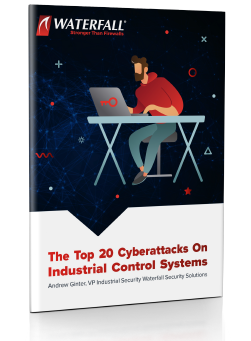SUBSCRIBE
NEXT EPS.
PREVIOUS EPS.
PREVIOUS EPS.
SUBSCRIBE
NEXT EPS.
Dig deeper – download the accompanying ebook here

 THE INDUSTRIAL SECURITY INSTITUTE
THE INDUSTRIAL SECURITY INSTITUTE
OT / industrial / ICS cybersecurity concepts from the perspective of the world’s most secure industrial sites. Truly secure sites ask different questions, and so get different answers. Subscribe to never miss an episode
EPS. 8 – Market Manipulation
An organized crime syndicate targets known vulnerabilities in Internet-exposed services and gains a foothold on IT networks. They seed RAT tools into the compromised system, eventually gaining Windows Domain Admin privileges. The attackers reach into ICS computers that trust the IT Windows domain and propagate RAT technology to those computers. Because the ICS computers are unable to route traffic to the Internet, the attackers route the traffic via peer-topeer connections using compromised IT equipment. Once in the ICS network, attackers download and analyze control system configuration files. They then reprogram a single PLC, causing it to mis-operate a vital piece of physical equipment, while reporting to the plant HMI that the equipment is operating normally. The equipment wears out prematurely in a season of high demand for the plant’s commodity output. The plant shuts down for emergency repair of this apparently random equipment failure. The same attack occurs at two nearby plants. Once the equipment has failed, the perpetrators erase all evidence of their presence from the affected plants’ ICS networks. Prices of the
commodity produced at the affected plants spike on commodities markets. When plant production at all plants returns to normal, commodity prices return to normal. Before and after the attack, the attackers routinely speculate on futures markets for the affected commodity. That these attackers make large profits when commodity prices spike unexpectedly is seen by any potential investigators as normal and legal. The attack is repeated in the next
season of high demand.
THE TOP 20 CYBERATTACKS ON INDUSTRIAL CONTROL SYSTEMS
These Top 20 attacks have been selected to represent cyber threats to industrial sites across a wide range of circumstances, consequences and sophistication. No industrial operation is free of risk, and different industrial enterprises may legitimately have different “appetites” for certain types of risks. In this series we show how to use the Top 20 Cyberattacks to compare the strength of two security postures at a hypothetical water treatment plant: Defence in depth 2013 (software based security) vs. that same security posture plus a unidirectional security gateway device providing hardware-enfonced security). We ask the question, does either defensive posture reliably defeat each attack? Over the course of 20 episodes we build a score card that can be used to easily communicate risk reduction benefits to business decision-makers who are not familiar with cyber-security.
ABOUT ANDERW GINTER
At Waterfall, Andrew leads a team of experts who work with the world’s most secure industrial sites. He is author of two books on industrial security, a co-author of the Industrial Internet Consortium’s Security Framework, and the co-host of the Industrial Security Podcast. Andrew spent 35 years designing SCADA system products for Hewlett Packard, IT/OT connectivity products for Agilent Technologies, and OT/ICS security products for Industrial Defender and Waterfall Security Solutions.